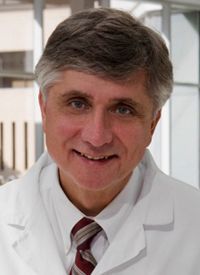Article
Third-Line CAR T-Cell Therapy Improves Outcomes in B-Cell Lymphomas
Author(s):
CAR T-cell therapies are now incorporated into National Comprehensive Cancer Network guidelines as a recommended third-line strategy in this setting, with the most recent addition being lisocabtagene maraleucel.
Stephen J. Schuster, MD

Outcomes for patients with relapsed/refractory B-cell lymphoma (BCL) have improved since the introduction of chimeric antigen receptor (CAR) T cell therapy in the third-line setting. CAR T-cell therapies are now incorporated into National Comprehensive Cancer Network (NCCN) guidelines as a recommended third-line strategy in this setting, with the most recent addition being lisocabtagene maraleucel (liso-cel; Breyanzi).1
Version 3.2021 of the B-cell lymphoma NCCN guidelines includes a recommendation for the use of axicabtagene ciloleucel (axi-cel; Yescarta), liso-cel, or tisagenlecleucel (Kymriah) after 2 or more prior chemoimmunotherapy regimens for patients with diffuse large B-cell lymphoma (DLBCL) and other BCLs, with these recommendations assigned a category 2A.
Prior to the era of CAR T cell therapy in the setting of DLBCL, “we could cure a little over half of patients with first-line rituximab [Rituxan] plus chemotherapy2 and with our second line of therapy [high-dose chemotherapy plus autologous stem cell transplant], we can add about another 14% to the surviving patients,”3 said Stephen J. Schuster, MD, in a virtual presentation during the 2021 NCCN Virtual Annual Conference.
Approximately another 11% of patients with DLBCL will survive with third-line CAR T therapy,4,5 up from 4% in the pre-CAR T era,6 assuming a failure rate of 69% for second-line stem cell transplant and approximately one-third of patients without disease progression at 5 years with the use of CD19-directed CAR T cells, said Schuster, who is director of the Lymphoma Program at the University of Pennsylvania.
In the updated NCCN guidelines, axi-cel is indicated for the treatment of adults with relapsed/refractory large BCL, including DLBCL, not otherwise indicated, primary mediastinal large BCL (PMBCL), and DLBCL arising from follicular lymphoma (FL).
Liso-cel is an option for the treatment of patients with relapsed/refractory DLBCL, PMBCL, relapsed/refractory high-grade BCLs with translocations of MYC and BCL-2 and/or BCL-6 (double-/triple-hit lymphoma), and high-grade BCLs, not otherwise specified.
Tisagenlecleucel is indicated for the treatment of adults with relapsed/refractory large BCL, including DLBCL, not otherwise specified, and DLBCL arising from follicular lymphoma. Tisagenlecleucel is not approved by the FDA, however, for the treatment of patients with relapsed/refractory PMBCL, Schuster noted.
The 3 registrational trials that prompted the approval of CD19-directed CAR T cell therapy for patients with relapsed/refractory DLBCL are ZUMA-1, JULIET, and TRANSCEND NHL001. The data from these 3 studies support CAR T-cell therapy as “the best option for patients as third-line therapy,” he said.
In ZUMA-1,7 conducted in patients with chemo-refractory BCLs, primarily those with DLBCL not otherwise specified (NOS; 76%) but also PMBCL or transformed FL (24%), treatment with axi-cel led to a median PFS of 5.9 months, with the PFS curve starting to plateau at about 6 months. “Very few events occur after 1 year,” said Schuster.
In JULIET,8 conducted primarily in patients with DLBCL, about one-third of patients treated with tisagenlecleucel were free of disease at 1 year. Patients in remission at 3 months “had about a 70% chance of long-term disease-free survival,” and those in complete remission (CR) at 12 months had approximately a 95% or better chance of long-term disease-free survival, he said. Five-year follow-up data from JULIET shows a response duration of about 60%; a similar duration of response is anticipated for axi-cel and liso-cel, he indicated.
TRANSCEND NHL0019 examined the effect of liso-cel in patients with DLBCL NOS (51% of the study cohort), transformed FL (22%), indolent non-Hodgkin lymphoma (7%), high-grade BCL (13%), and PMBCL (6%). The 1-year PFS rate was 44% of patients in the overall study cohort, which improved to 65% in those with a CR. The probability of PFS was highest in patients with PMBCL and transformed FL; the median was not yet reached in either group.
There is still an unmet need in DLBCL, as survival is about 80% with the use of third-line CAR T-cell treatment, said Schuster. Improvement in apheresis and cell manufacturing and optimal patient selection could improve outcomes further. Looking ahead, the combination of CAR T-cell therapy with immune checkpoint inhibitors and the use of CAR T-cell therapy in earlier lines, among other strategies, may offer opportunities to enhance outcomes.
References
- Schuster SJ. Updates on CAR T-cell therapy for relapsed/refractory B-cell lymphomas. Presented at: 2021 NCCN Virtual Annual Conference; March 18-20, 2021; virtual.
- Feugier P, Van Hoof A, Sebban C, et al. Long-term results of the R-CHOP study in the treatment of elderly patients with diffuse large B-cell lymphoma: a study by the Groupe d'Etude des Lymphomes de l'Adulte. J Clin Oncol. 2005;23:4117-4126. doi: 10.1200/JCO.2005.09.131
- Gisselbrecht C, Glass B, Mounier N, et al. Salvage regimens with autologous transplantation for relapsed large B-cell lymphoma in the rituximab era. J Clin Oncol. 2010;28:4184-4190. doi:10.1200/JCO.2010.28.1618
- Schuster SJ, Svoboda J, Chong EA, et al. Chimeric antigen receptor T cells in refractory B-cell lymphomas. N Engl J Med. 2017;377:2545-2554. doi:10.1056/NEJMoa1708566
- Chong EA, Ruella M, Schuster SJ. Five-year outcomes for refractory B-cell lymphomas with CAR T-cell therapy. N Engl J Med. 2021;384(7):673-4. doi:10.1056/NEJMc2030164
- Van Den Neste E, Schmitz N, Mounier N, et al. Outcome of patients with relapsed diffuse large B-cell lymphoma who fail second-line salvage. Bone Marrow Transplant. 2016;51(1):51-57. doi:10.1038/bmt.2015.213
- Locke FL, Ghobadi A, Jacobson CA, et al. Long-term safety and activity of axicabtagene ciloleucel in refractory large B-cell lymphoma (ZUMA-1): a single-arm, multicentre, phase 1-2 trial. Lancet Oncol. 2019;20:31-42. doi:10.1016/S1470-2045(18)30864-7
- Schuster SJ, Bishop MR, Tam CS, et al. Tisagenlecleucel in adult relapsed or refractory diffuse large B-cell lymphoma. N Engl J Med. 2019;380(1):45-56. doi: 10.1056/NEJMoa1804980
- Abramson J, Lia Palomba M, Gordon LI, et al. Long-term safety and activity of axicabtagene ciloleucel in refractory large B-cell lymphoma (ZUMA-1): a single-arm, multicentre, phase 1-2 trial. Lancet. 2020(1);396:839-852. doi:10.1016/S1470-2045(18)30864-7









